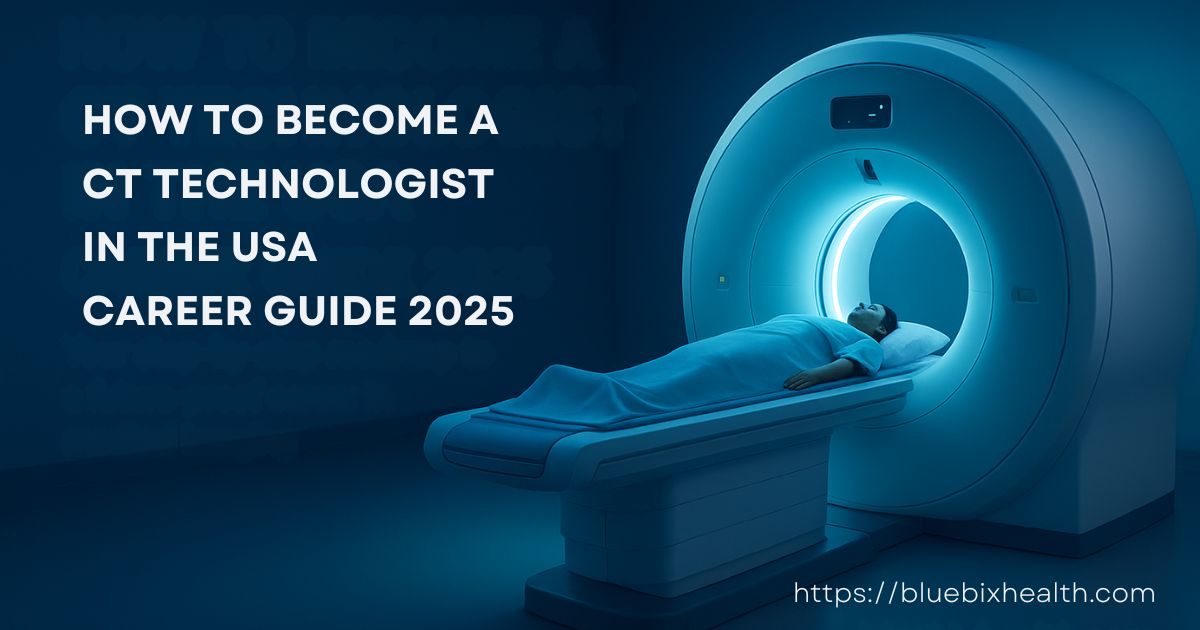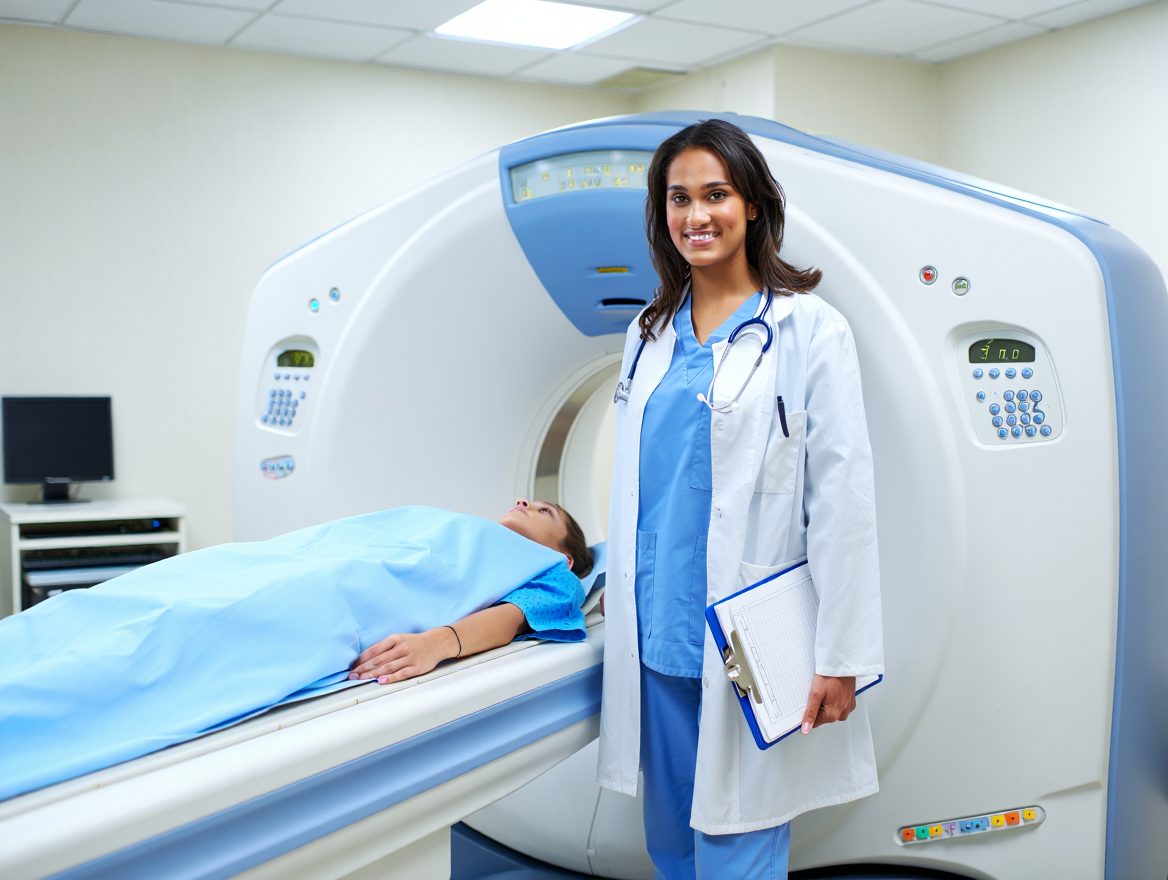
CT Technologist job in the USA
The demand for CT Technologist job in the USA is skyrocketing. With an aging population, advanced diagnostic technologies, and a nationwide shortage of imaging professionals, the role of CT techs has become one of the most future-proof careers in healthcare. If you’ve ever wondered, How can I become a CT Technologist in the USA?, this guide is your complete roadmap.
With over 25 years of healthcare workforce writing experience, I’ll break down everything you need to know from education requirements and certifications to job outlook, salary trends, and career growth opportunities in 2025. By the end, you’ll have a clear step-by-step path to launch (or advance) your CT Technologist career.
Why choose a Career as a CT Technologist job in the USA in 2025?
1. Rising Demand in Diagnostic Imaging
- CT scans are vital in diagnosing strokes, cancer, injuries, and internal diseases.
- By 2030, diagnostic imaging is projected to grow by 12%, faster than most other healthcare jobs.
2. Competitive Salary Potential
- The average salary for a CT Technologist in the USA is $75,000–$95,000 annually, with top earners crossing $100,000 depending on location and specialization.
3. Career Stability & Growth
- Healthcare is recession-proof.
- CT Technologists are critical team members in hospitals, imaging centers, and outpatient facilities.
Step-by-Step: How to Become a CT Technologist job in the USA

Step 1: Complete the Required Education
To become a CT Technologist, you need a strong foundation in radiology.
- Associate Degree in Radiologic Technology (2 years) – Most common pathway.
- Bachelor’s Degree in Radiologic Sciences (4 years) – Preferred for leadership roles.
- Programs must be accredited by the Joint Review Committee on Education in Radiologic Technology (JRCERT).
Courses You’ll Study
- Anatomy & Physiology
- Patient Care Procedures
- Radiation Physics
- Imaging Equipment & Technology
- Advanced CT Scan Techniques
Step 2: Gain ARRT Certification (Radiography First)
Before specializing in CT, you must first become a Registered Radiologic Technologist (RT(R)) through the American Registry of Radiologic Technologists (ARRT).
- Pass the ARRT exam in Radiography.
- Maintain professional ethics and continuing education.
Step 3: Specialize in Computed Tomography (CT)
Once you’re certified as a radiologic technologist, you can specialize in CT.
Two Pathways:
- Postprimary Certification in CT by ARRT
- Requires documented clinical experience.
- Pass the ARRT CT certification exam.
- On-the-Job Training & Certification
- Some facilities allow radiologic technologists to train in CT while working.
- Must still pass the ARRT CT exam for official recognition.
Step 4: Obtain State Licensure
- Many states in the USA require additional licensure to practice as a CT Technologist.
- Check your state’s requirements via the American Society of Radiologic Technologists (ASRT).
Step 5: Gain Clinical Experience
Hands-on training is crucial. Most employers prefer CT technologists with at least 1–2 years of practical experience.
Common Work Environments:
- Hospitals
- Diagnostic Imaging Centers
- Outpatient Clinics
- Trauma & Emergency Care Units
Step 6: Continue Professional Development
Healthcare evolves rapidly. To stay competitive, CT Technologists must engage in Continuing Education (CE).
- Earn credits through workshops, online courses, or seminars.
- Stay updated on AI-driven imaging, low-dose CT technologies, and advanced 3D imaging.
Career Outlook for CT Technologists in the USA (2025)
- Job Growth: 7–9% increase by 2030 (BLS data).
- Employment Opportunities: Over 16,000 job openings annually.
- High-Demand States: California, Texas, New York, Florida, Massachusetts.
- Best-Paying States: California, Massachusetts, and Washington.
Salary Guide for CT Technologists in 2025
| Career Level | Average Salary | Top 10% Salary |
| Entry-Level | $55,000 | $65,000 |
| Mid-Career | $75,000 | $85,000 |
| Senior/Lead | $90,000+ | $105,000+ |
Tip: Night shifts, emergency units, and metropolitan hospitals often pay shift differentials that boost earnings.
Skills Every CT Technologist Needs in 2025

- Technical Expertise – Operating CT scanners & software.
- Patient Care – Empathy, safety, and comfort.
- Analytical Thinking – Interpreting scans with precision.
- Teamwork – Collaborating with radiologists & healthcare staff.
- Adaptability – Embracing AI and new imaging technologies.
Career Advancement Opportunities
Once you’ve built experience, you can grow into:
- Lead CT Technologist – Supervising imaging teams.
- Clinical Instructor – Training new technologists.
- Radiology Department Manager – Administrative leadership.
- Specialization in Cardiac or Neuro CT – Higher salary potential.
Emerging Trends Shaping CT Technologist Careers in 2025
- AI-Powered Imaging – Faster, more accurate scans.
- Low-Dose Radiation Techniques – Safer for patients.
- Portable CT Machines – Used in ERs and remote care.
- Tele-Radiology – Remote interpretation and global collaboration.
FAQs on Becoming a CT Technologist in the USA
Q1. How long does it take to become a CT Technologist in the USA?
A: Typically 2–4 years depending on whether you pursue an associate or bachelor’s degree, plus certification.
Q2.How does a Radiologic Technologist differ from a CT Technologist?
A: Radiologic Technologists cover general imaging, while CT Technologists specialize in advanced cross-sectional imaging with CT scanners.
Q3. Is the CT Technologist career stressful?
A: It can be high-pressure in trauma or ER settings, but most professionals find it rewarding due to its impact on patient outcomes.
Q4. Can I work as a CT Technologist without ARRT certification?
A: Most employers and states require ARRT certification. It significantly increases job opportunities and salary potential.
Q5. Are CT Technologists in demand in 2025?
A: Yes, with growing reliance on imaging for early disease detection, demand is projected to rise steadily through 2030.
Final Thoughts
If you’re looking for a rewarding, stable, and future-proof healthcare career, becoming a CT Technologist in the USA is an excellent choice. With strong salaries, high demand, and opportunities for advancement, this career is ideal for individuals passionate about technology and patient care.
Ready to start your journey? Explore top healthcare job opportunities at BluebixHealth.com—your trusted partner in building a successful medical imaging career.





